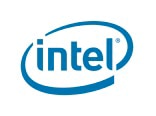April 24, 2019
Digital Transformation Success Starts with Workload Placement
Whether it’s the edge, fog computing, cloud computing or the data center, making smart choices for compute workloads is increasingly important.

Once upon a time — and not all that long ago — the data center was the only place for IT workloads to run. If an organization needed to process large amounts of data, that’s where it happened.
But the emergence of the cloud, coupled with the rise of digital transformation and the Internet of Things (IoT), now requires IT shops to think carefully about where they’ll run workloads. Every decision has an impact on overall cost, performance and agility — and often, these decisions directly contribute to (or detract from) new revenue.
For example, recently I spoke with a company that manufactures custom hats. Years ago, this company’s sales force would have taken orders from shops months in advance, and it would have had little flexibility to adjust its manufacturing or fulfillment processes to align with unexpected fluctuations in demand (which were likely to be minimal anyway). Fast-forward to today, and the company might be inundated with orders for a specific product on any given day simply because a celebrity or social media influencer decided to wear a certain hat in a photograph. To adjust to this new reality, the company is placing more product design and engineering workloads in the cloud, where it can quickly ramp them up if needed.
Along with the cloud, fog computing and edge computing are helping organizations to optimize their workload placement for digital transformation.
Edge Computing Delivers Efficiency and Performance
As enterprises increasingly embrace IoT, more data is being stored and processed near the site where it is collected (often referred to as the network “edge”). Edge computing has valuable applications across industries, but the factory floor has already become a classic use case. With the help of IoT sensors, manufacturers can now collect real-time data on virtually anything pertinent to their operations — including metrics such as temperature and product output, as well as complicated equipment data that enables predictive maintenance. In many cases, transmitting data from the edge to a central data center or the cloud for processing would both be costly and hamper performance. As a result, more organizations are investing in edge computing solutions.
How Fog Computing Can Cut Costs
“Fog computing” is a term coined by Cisco Systems, but organizations are applying the concept across infrastructure from a variety of vendors. In a fog computing model, sensor data from the edge is pushed to a gateway on the LAN, which converts the data into an internet-friendly protocol. In turn, this allows the data to be analyzed, processed and stored at the LAN level. Some of this data will eventually be pushed to the public cloud, but the fog layer allows organizations to filter and send on only “actionable” data, greatly reducing costs and improving efficiency.
The Advantages of Residing in the Cloud
Finally, the public cloud provides the agility that allows organizations to respond to market events almost in real time. If a retailer experiences a sudden spike in demand, for example, company leaders won’t need to worry about their website crashing or being unable to process orders due to a strain on on-premises resources. They can simply spin up new resources in the cloud.
It’s important for IT leaders to carefully think through these options, and make adjustments to their organizations’ workload placements based on results. While the public cloud has a large role to play in digital transformation, it should not be treated as a catchall. Instead, the placement of resources in the cloud should be the result of strategic planning that also includes the edge, the fog and an organization’s primary data center.
This blog post brought to you by:

